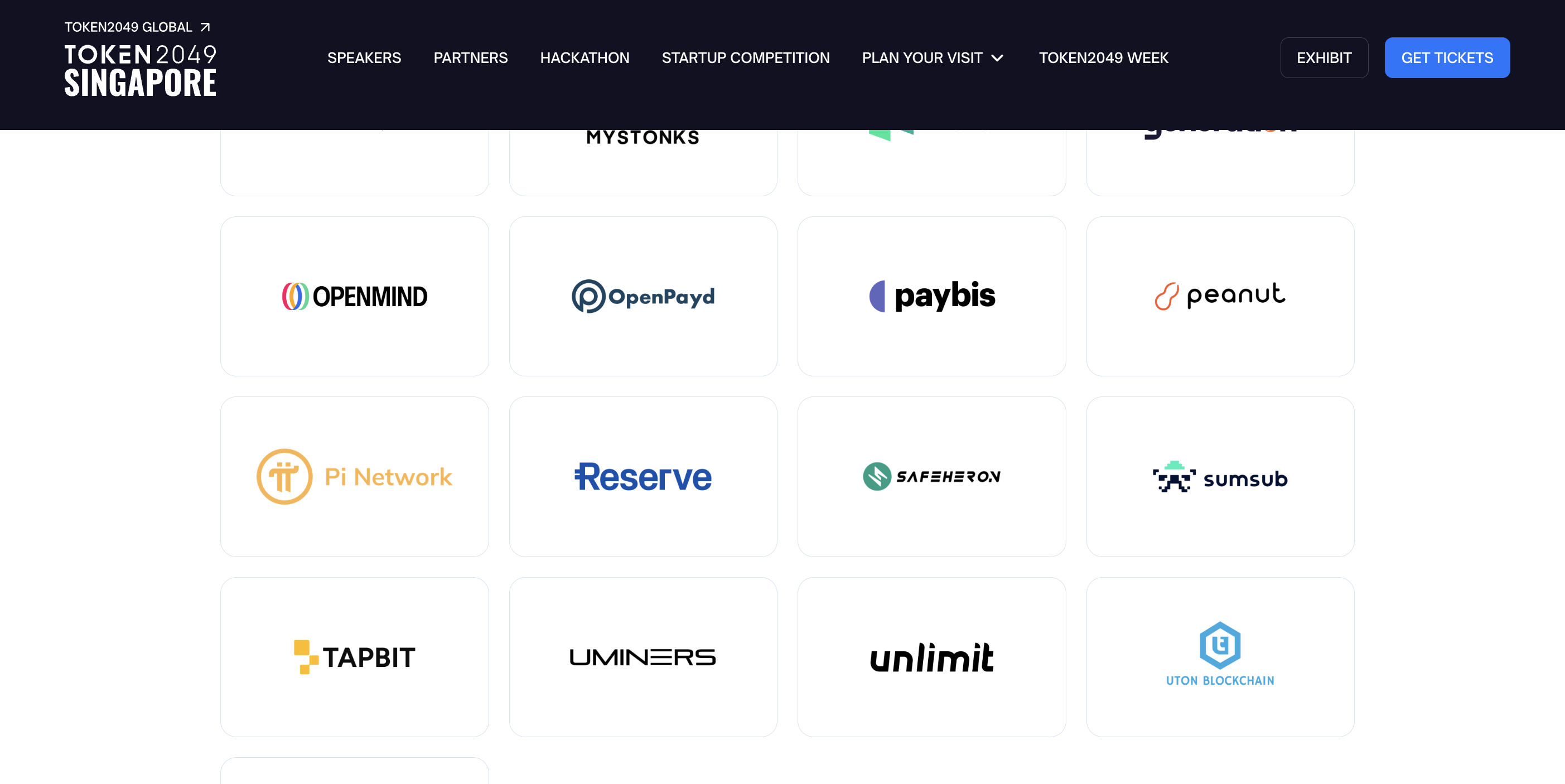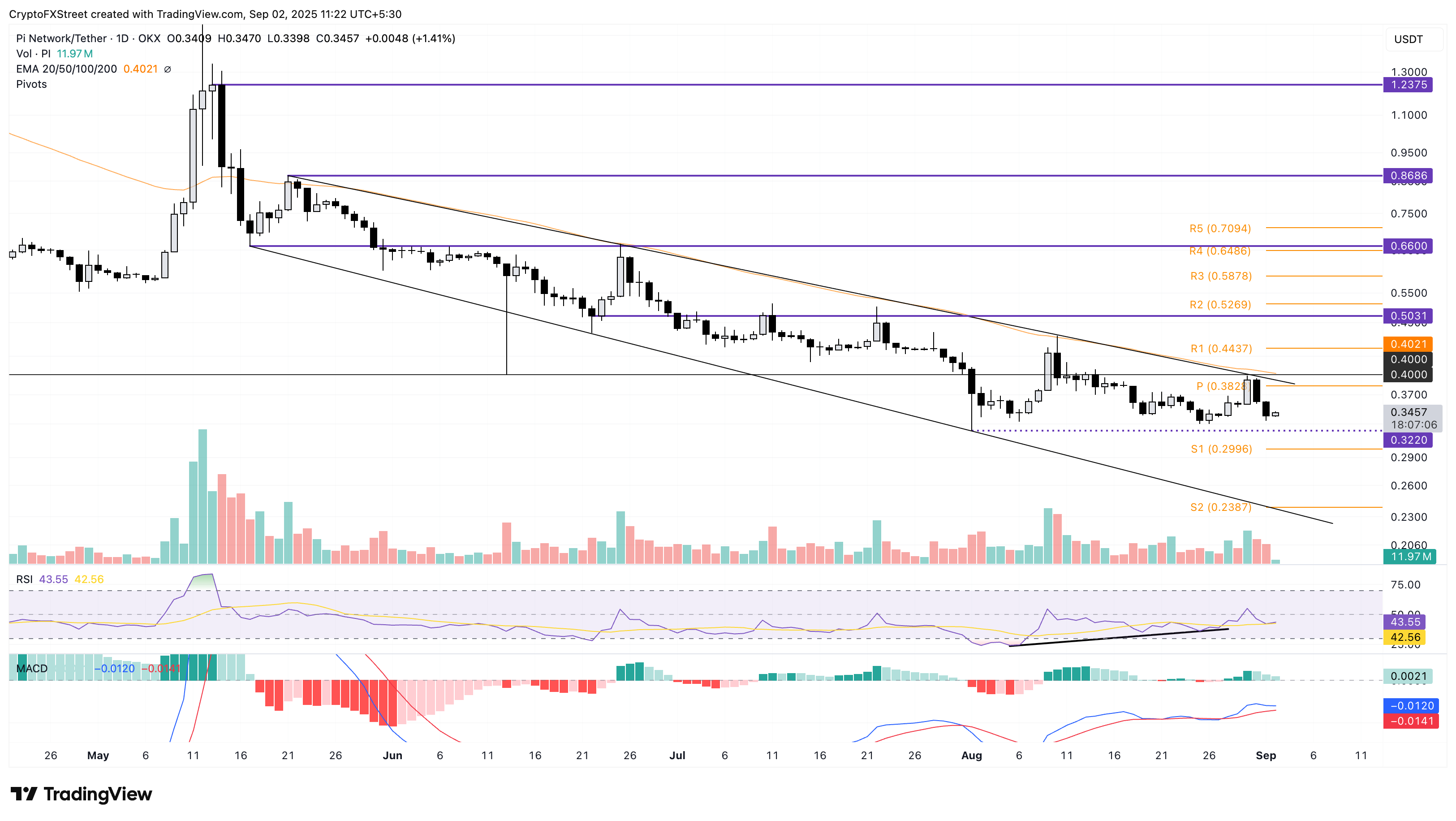Pi Network Shines as Gold Sponsor at Token2049 Amid Price Struggles in Falling Channel
Pi Network steps into the spotlight with major sponsorship—while its token battles a stubborn downtrend.
The Price Reality Check
Despite the high-profile presence at one of crypto's premier events, Pi's market performance tells a different story. The token remains trapped in a falling channel—classic bearish behavior that even a gold sponsorship can't gloss over.
Event Glitz vs. Market Grim
Token2049 attracts big names and bigger wallets, but Pi's price action ignores the champagne and confetti. It’s a reminder that in crypto, checks written for sponsorships don’t always cash out as investor confidence.
When Marketing Drops Faster Than Price
Sponsoring conferences might buy visibility, but it doesn’t guarantee a chart reversal. Just ask any trader staring at red candles while reading press releases.
Pi Network could return to the public stage with Token2049
Pi Network is one of the Gold sponsors of the Token2049 crypto event, as listed on the event’s partnership page alongside other notable names, including Circle and CoinEx. This fuels the discussion of Pi Network founder Nicolas Kokkalis, who returns to the public stage after the Consensus event by Coindesk that took place in Toronto from May 14 to May 16 this year.

Partners of Token2049. Source: Token2049
The initial anticipation, coupled with the launch of the Linux version of Pi Node, could help PI recover its losses. However, investors must remember that during the past three-day Consensus event in Canada, the token dropped by 41%. This downturn marked the beginning of a prolonged correction period.
Pi Network continues the struggle for a bounce back
Pi Network’s falling channel pattern remains intact on the daily chart, with the recent downcycle started by the more than 8% drop on Sunday. At the time of writing, PI recovers over 1% on the day, with bulls eyeing a bounce back to the channel pattern’s overhead trendline formed by connecting the May 21 and August 10 peaks.
The 50-day Exponential Moving Average (EMA) at $0.4021 is moving closely with the overhead trendline. A decisive push above this level WOULD mark the beginning of the breakout rally, targeting the $0.5000 psychological milestone.
The momentum indicators on the daily chart remain at neutral levels, with the Relative Strength Index (RSI) at 43, fluctuating at the midpoint, and exhibiting a steady formation of higher lows. The near-stagnant rise, compared to the price action taking multiple supports slightly above the $0.3220 level, highlights a bullish divergence, increasing the chances of an uptrend revival.
The Moving Average Convergence Divergence (MACD) indicator displays a decline in green histogram bars as the average lines approach a potential convergence. A red histogram bar below the zero line, indicating a possible crossover, would signal a sell opportunity as momentum turns bearish.

PI/USDT daily price chart.
Looking down, if PI fails to uphold the $0.3220 support level, it could extend the decline to the S1 pivot level at $0.2996.
Crypto ETF FAQs
What is an ETF?
An Exchange-Traded Fund (ETF) is an investment vehicle or an index that tracks the price of an underlying asset. ETFs can not only track a single asset, but a group of assets and sectors. For example, a Bitcoin ETF tracks Bitcoin’s price. ETF is a tool used by investors to gain exposure to a certain asset.
Is Bitcoin futures ETF approved?
Yes. The first Bitcoin futures ETF in the US was approved by the US Securities & Exchange Commission in October 2021. A total of seven Bitcoin futures ETFs have been approved, with more than 20 still waiting for the regulator’s permission. The SEC says that the cryptocurrency industry is new and subject to manipulation, which is why it has been delaying crypto-related futures ETFs for the last few years.
Is Bitcoin spot ETF approved?
Yes. The SEC approved in January 2024 the listing and trading of several bitcoin spot Exchange-Traded Funds, opening the door to institutional capital and mainstream investors to trade the main crypto currency. The decision was hailed by the industry as a game changer.
Which are the pros and cons of crypto ETFs?
The main advantage of crypto ETFs is the possibility of gaining exposure to a cryptocurrency without ownership, reducing the risk and cost of holding the asset. Other pros are a lower learning curve and higher security for investors since ETFs take charge of securing the underlying asset holdings. As for the main drawbacks, the main one is that as an investor you can’t have direct ownership of the asset, or, as they say in crypto, “not your keys, not your coins.” Other disadvantages are higher costs associated with holding crypto since ETFs charge fees for active management. Finally, even though investing in ETFs reduces the risk of holding an asset, price swings in the underlying cryptocurrency are likely to be reflected in the investment vehicle too.

